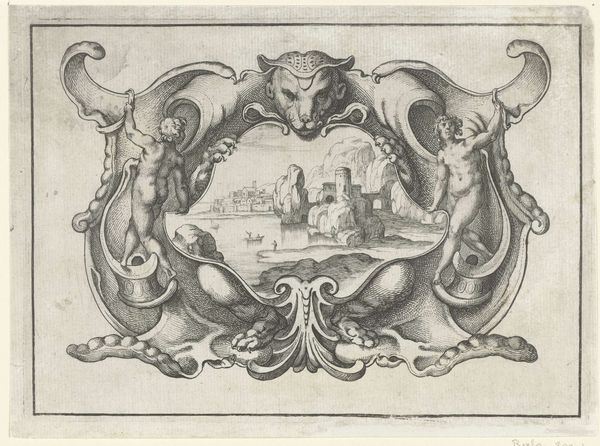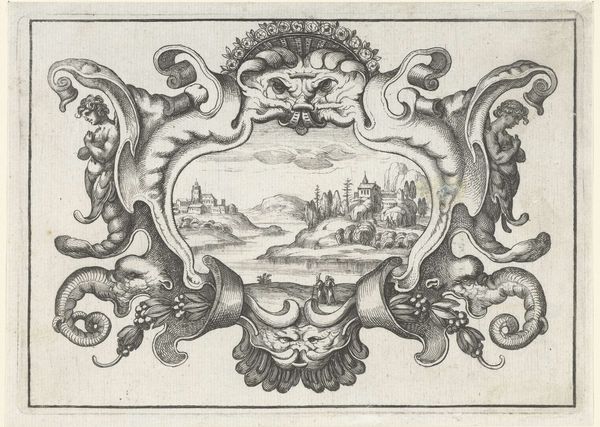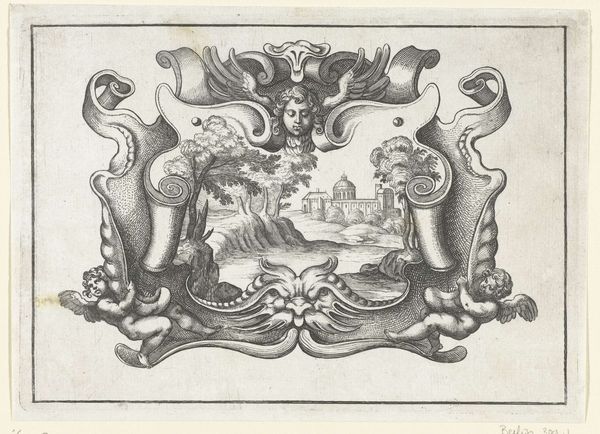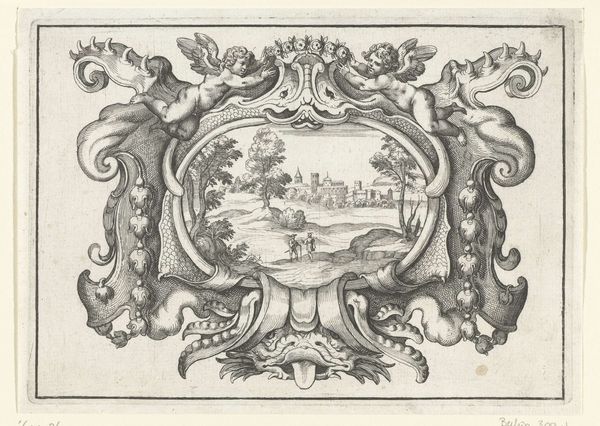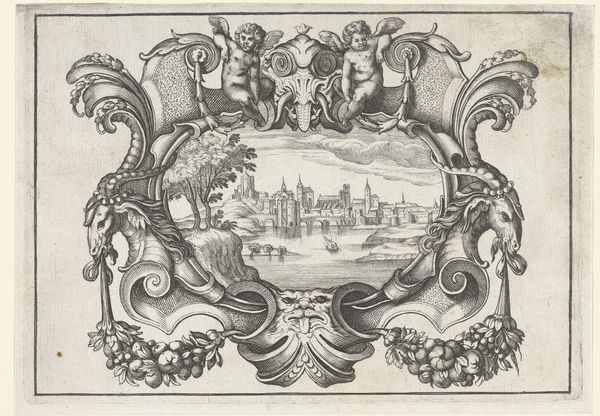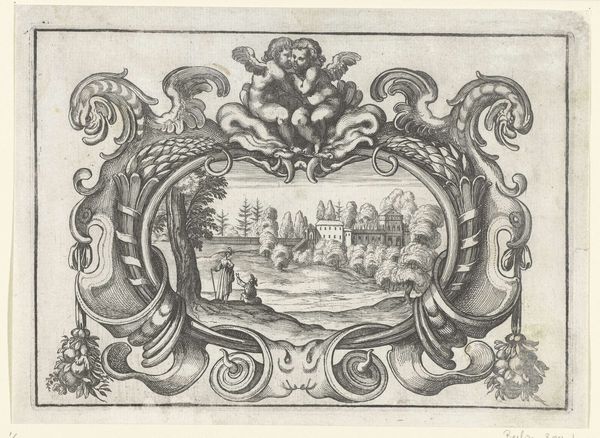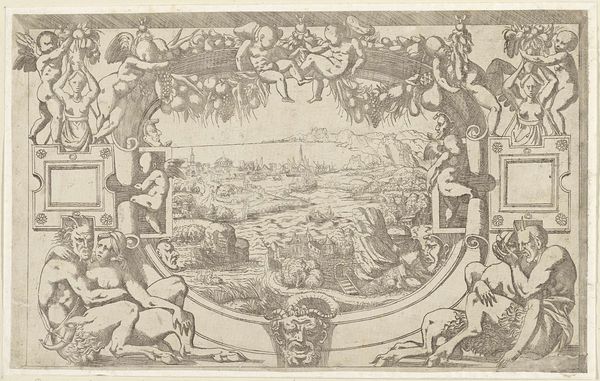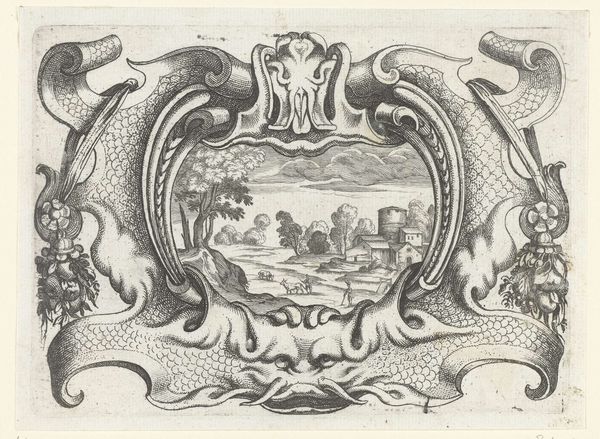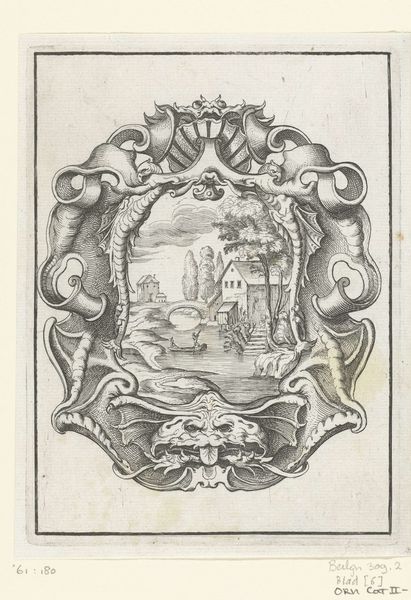
drawing, ink, engraving
#
drawing
#
baroque
#
pen drawing
#
landscape
#
figuration
#
ink
#
pen-ink sketch
#
history-painting
#
engraving
Dimensions: height 136 mm, width 190 mm
Copyright: Rijks Museum: Open Domain
Curator: This intricate engraving is entitled "Cartouche met twee gevleugelde putti" created by Daniel Rabel in 1634. It features a landscape scene framed by elaborate ornamental elements and cherubic figures. Editor: The landscape almost feels like a glimpse, like a window peeking out, doesn’t it? And those putti look so nonchalantly posed, considering all the meticulous work that must have gone into rendering them. The lines are unbelievably fine. Curator: Absolutely. The symbolic language here is rich. Cartouches often held inscriptions, messages… here, the landscape itself becomes the message, framed by symbols of divinity and innocence. The putti, traditionally associated with love and beauty, flank this idealized vision of the countryside. Perhaps evoking a longing for an Arcadia. Editor: And think about the physical act of creating this! Imagine the skilled labor, the precision required to carve these delicate lines into a metal plate. The social status afforded to artists was very different back then than in modern times, yet that painstaking craftsmanship hints at some degree of respect. Who was this work *for*, though? A book? A print sold individually? That would drastically change the interpretation of its worth and value. Curator: It speaks to Baroque sensibilities of ornate beauty intertwined with nature. The scene in the center reminds one of wandering away to find serenity. The landscape framed emphasizes the theme of human journey amid divinity and innocence. Editor: The labor and distribution behind this would have implications for access, of course. Given that engravings could create multiples, perhaps this offered the less wealthy some degree of proximity to traditionally elite imagery. Was art becoming more democratized through processes of multiplication like this, or remaining an aesthetic symbol of high-status identity and ownership? Curator: The very act of framing transforms a simple landscape into an emblem, laden with layers of meaning. I like to think it invites reflection and reminds the audience that serenity comes through perspective and introspection. Editor: Indeed. Thinking about the material reality allows us to connect the imagery to wider social issues. Now, looking again at the cherubic figures, it does bring an added perspective in which the landscape represents love, beauty, and divinity, adding yet another dimension.
Comments
No comments
Be the first to comment and join the conversation on the ultimate creative platform.
